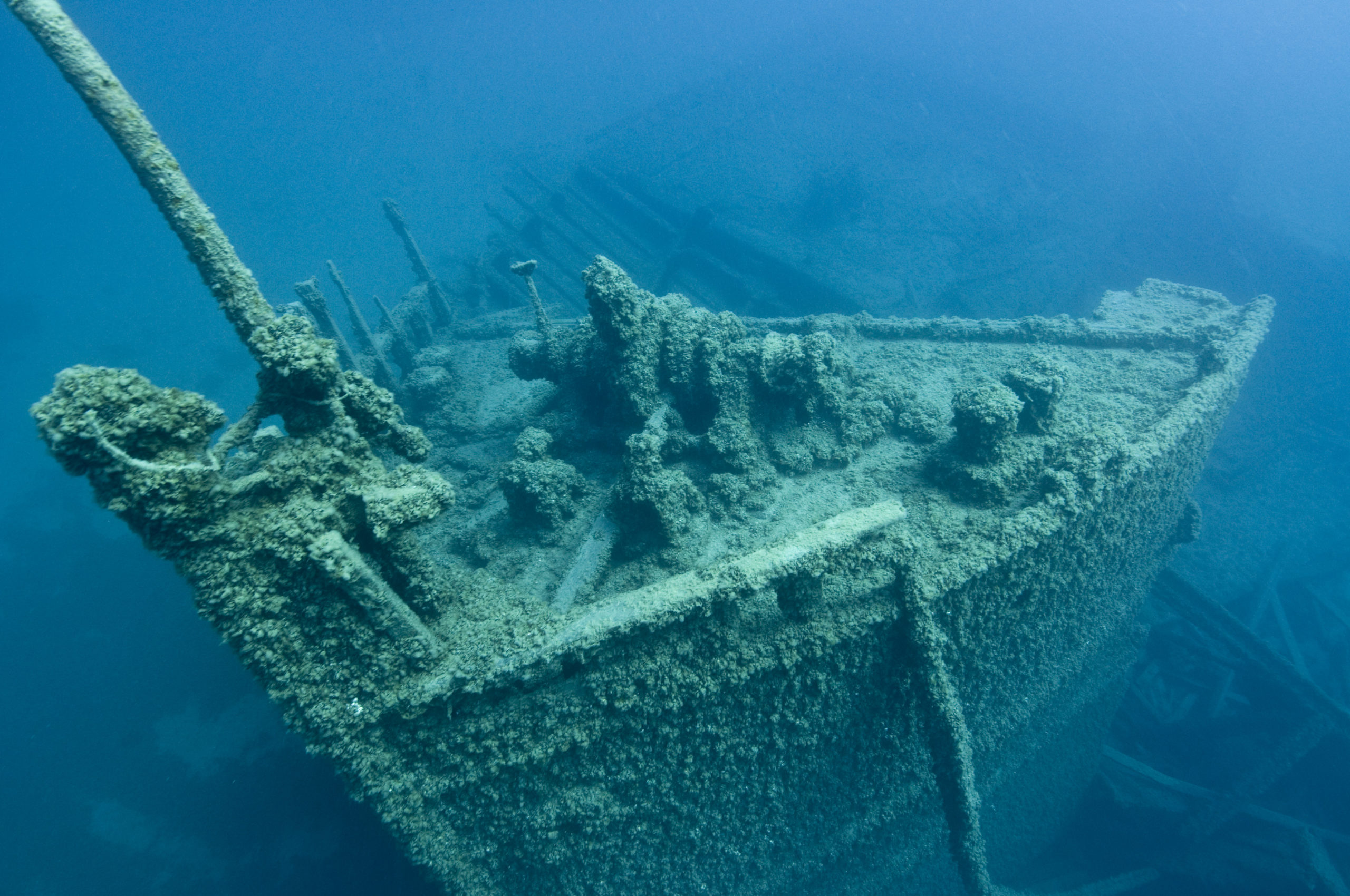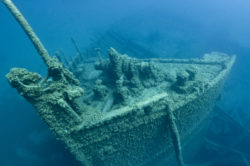
The Twice Sunk Steel Bulk Freighter Grecian
The Grecian is a 296-foot-long steel bulk freighter lying nearly 100 feet deep in Thunder Bay National Marine Sanctuary. Its bow, stern, most of the machinery – including the engine, boiler, pieces of the propeller, and deck machinery – are generally intact. Unfortunately, the midship portion of the freighter collapsed. The Grecian represented an era of unprecedented industrial development and technological innovation. Made with steel, she marks a change in shipbuilding techniques and technology throughout the nineteenth century. Before the Grecian first launched in 1891, most shipbuilders chose wood to produce stronger yet lighter hulls.
Globe Iron Works in Cleveland, Ohio built Grecian to carry iron ore, the main raw material needed for production of steel. The Grecian was built to serve J.P Morgan’s U.S. Steel Corporation operations, the nation’s first billion-dollar firm carrying iron ore. The Grecian was one of the most cost-effective vessels of her era due to the volume of cargo she could carry and the speed at which she could travel. In 1896 alone she made an impressive 35 trips and carried more than 93,000 tons of iron ore between Escanaba, Michigan and Cleveland.
Unfortunately, on June 7, 1906, the Grecian struck a rock, tearing a hole in her hull and causing her to sink in the shallow waters of the St. Mary’s River that flows between Lake Superior and Lake Huron. In 1909, two large, steel tankers known as canalons were sunk and fastened to the Grecian’s stern by hardhat diver with the goal of raising the ship and giving her a second chance. Once the ship was refloated, the steamer Sir Henry Bessemer took her in tow and set sight for Detroit, where repairs would be made. On the way, the Grecian filled with water and sank for a second time near the Thunder Bay Islands. All crew members aboard the ship made a safe escape but there was never another attempt to raise the Grecian again. In 2009, a team of underwater archaeologists documented the shipwreck and produced an archaeological site plan which can be found here.

The Grecian had five sister ships, including the Norman which lies 20 miles north of her in Thunder Bay National Marine Sanctuary due to a collision by the Canadian steamer Jack 11 years prior. The six sister ships were named the “fast steel flyers” as they used both sail and steam power, a rarity at the time.
To see some of the other shipwrecks protected by Thunder Bay National Marine Sanctuary, put on your virtual reality goggles (and a virtual reality wetsuit) and check out full color, 360-degree views of select sites within the sanctuary thanks to NOAA’s Office of National Marine Sanctuaries.
